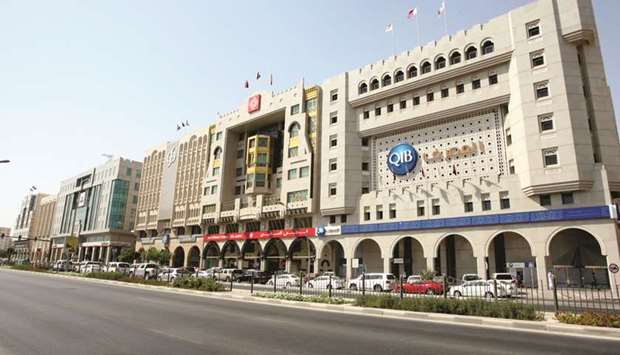Moody’s Investors Service (Moody’s) yesterday affirmed the long-term deposit and issuer ratings of the 10 banks it rates in Qatar, as well as the senior unsecured and subordinated debt ratings of their affiliated entities.
The banks reviewed are Qatar National Bank, Doha Bank, Al Khalij Commercial Bank (Al Khaliji), Ahli Bank, Barwa Bank, International Bank of Qatar, Masraf Al Rayan, Qatar International Islamic Bank, Qatar Islamic Bank and The Commercial Bank.
The banks have managed to maintain strong asset quality and capital buffers and their liquidity buffers remained solid, Moody’s said in a statement. Qatari bank’s system average non-performing loan ratio stood at 1.8% as of December 2017 and capital buffers stood at 15.5% tangible common equity to risk-weighted assets ratio, it said.
Moody’s has also affirmed the banks’ baseline credit assessments (BCA), adjusted BCAs, Counterparty Risk Assessments (CRAs) and Counterparty Risk Ratings (CRRs). At the same time, the rating agency changed the outlook on the long-term deposit, issuer and senior unsecured debt ratings to stable from negative.
The rating was primarily driven by resilience of the Qatari banks and the country’s operating environment to the ongoing unjust regional dispute with some fellow Gulf Co-operation Council (GCC) neighbours and Egypt, which has prompted Moody’s to change its Macro Profile score for Qatar to Strong- from Moderate+; and also on the expectation that the capacity of the Qatar government to support the country’s banks will remain unchanged, as indicated by Moody’s affirmation of the Aa3 Qatar government bond rating and change in outlook to stable from negative on July 13.
With regard to the operating environment, the impact of regional dispute on the banking systems has been limited to funding outflows mostly from the blockading countries, while overall market access for the banking system seems intact, Moody’s said.
The rating agency viewed that a quick resolution or a significant escalation of the regional dispute materially affecting Qatar’s credit metrics is a low-probability event in the next 12-18 months. Consequently, the downside risk that a prolongation of the regional dispute could trigger further outflows of external funding appears to have significantly reduced.
The banking system reliance on external funding has declined to around 29% of total banking system liabilities from 36% as of May 2017, which is well diversified geographically and across different funding products (includes inter-bank lines from international institutions, non-resident deposits and capital market issuances). The banks’ liquidity buffers have remained stable at 24% of tangible banking assets as the outflows observed during the first few months following the blockade began in June 2017, were largely offset by inflows from the Qatari government and related entities.
These developments prompted Moody’s to change the Macro Profile score of Qatar to Strong- from current Moderate+ underpinning the rating agencies change in outlook to stable.
Moody’s continues to incorporate a very high probability of government support for the long-term deposit and debt ratings of the Qatari banks and the change in their outlook is also driven by the change in outlook to stable from negative on the Aa3 Qatar government bond rating. This reflects Moody’s view that the government’s capacity to provide support to the country’s banks in case of need is expected to remained unchanged.
Moody’s very high probability of support for the banks in Qatar is driven by the government’s shareholding in the banks, the importance of the banking system to the country’s economy and past track record of pre-emptively supporting banks in 2009-2010.

The Qatar’s banks have managed to maintain strong asset quality and capital buffers and their liquidity buffers remain solid, Moody’s says.
